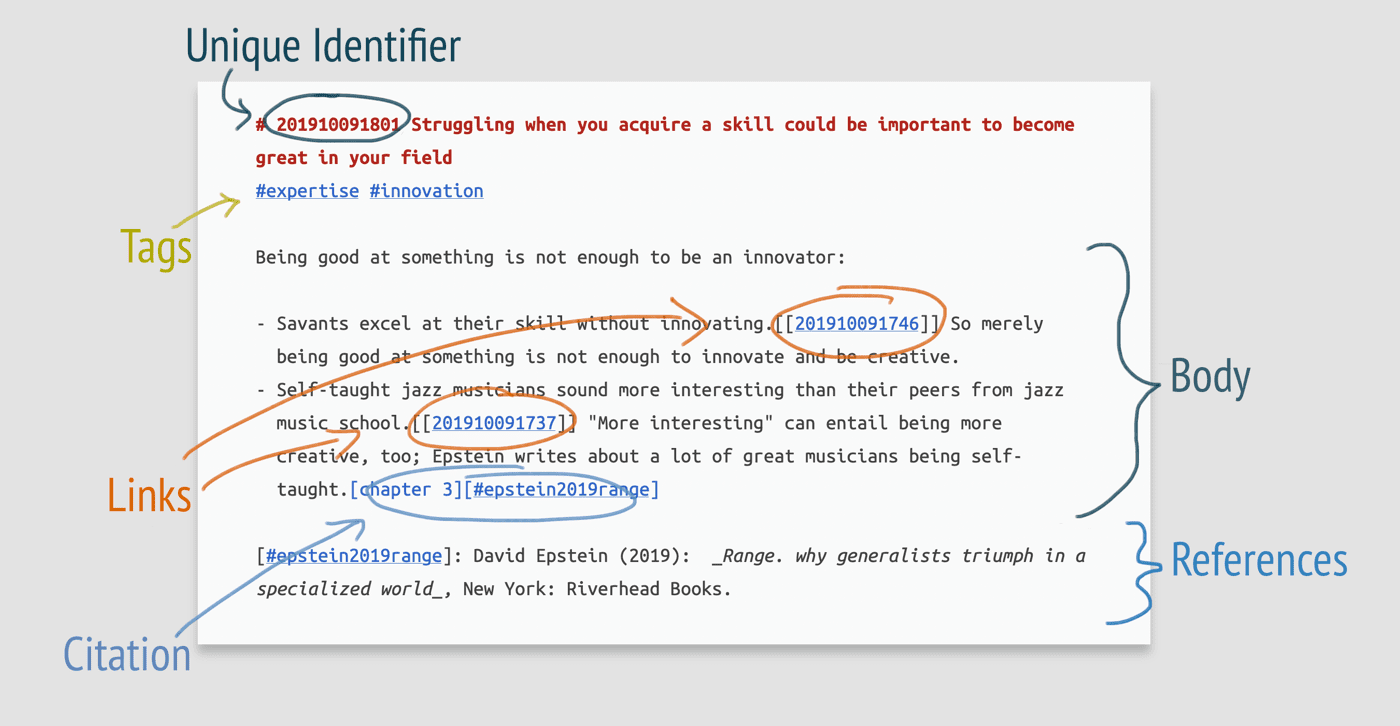The Zettelkasten Method
09 Oct 2021I recently stumbled on the zettelkasten note-taking method through the Write more, but shorter post. I realized it answered a question that I’ve been trying to figure out for some time: How can I effectively retain and recall the information I learn?
The zettelkasten method has a few simple yet powerful concepts to answer this.
- Each person should only have one zettelkasten (collection of notes) for the duration of their life.
- Each note should only contain one unit of knowledge or thought.
- The anatomy of a note should have three components: a header, body, and references.
- Notes should contain tags and be linked to other notes which will create an interconnected web of thoughts.
- Each note should be written in your own words which will improve recall of information.
Example note using the zettelkasten method:

The result of these concepts should be a zettelkasten that you can easily reference for topics you’ve learned. Referencing one note will lead you to all the interconnected topics or thoughts you’ve had for that note. You will reconstruct your brain’s thought process when you learned that topic and the interconnected web will also reveal connections that may not have been obvious initially.
Software and Zettelkasten
When Niklas Luhmann created the zettelkasten method, he used paper and note cards to capture his thoughts. Today, we have software to help us. The picture below is my “interconnected web of thoughts” (graph overview) from a year of notes on Roam.

Roam fits the concepts of the zettelkasten method extremely well and I plan to continue using it to improve my note-taking skills. I’ve used Apple Notes, Evernote, Notion, and various other note-taking apps but nothing has allowed me to retain and recall information like Roam. Using Roam and the techniques that the zettelkasten method provides, I’m confident I will be building a zettelkasten that will be useful throughout my life.